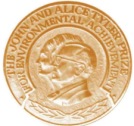John H. Seinfeld Tyler Prize for Environmental Achievement Awarded In 2012

John H. Seinfeld
Award Name : Tyler Prize for Environmental Achievement
Year of Award : 2012
Award for : Environment
Location : East Elmira, New York, United States
John H. Seinfeld is an expert in the causes and modelling of tropospheric pollution.He joined the California Institute of Technology (Caltech) as Assistant Professor of Chemical Engineering in 1967. Shortly after joining Caltech, he became intrigued with Los Angeles's historic smog, which, at that time, was near record highs. Caltech biology professor Ari Haagen-Smit had, in the early 1950s, surmised that ozone, the principal gaseous component of smog, results from reactions involving volatile hydrocarbons and oxides of nitrogen (NOx). Seinfeld realized that modeling the formation of smog over an urban area like Los Angeles would involve describing mathematically the three-dimensional transport, mixing, and chemical reactions in the atmosphere. A key component was describing the chemistry of the sunlight-driven hydrocarbon - NOx system. At the time of Haagen-Smit's classic papers, the actual mechanism of the underlying chemistry was unknown. The essential role of the hydroxyl (OH) radical in tropospheric chemistry was not established until about 1970.
Seinfeld and his group formulated a chemical mechanism for ozone formation and in 1973 developed the first urban-scale atmospheric chemical-transport model, which was applied to the Los Angeles basin. This work, published in three papers in the journal, Atmospheric Environment, initiated what emerged as an entire field of scientific endeavor devoted to the modeling of tropospheric pollution. Although he continued to conduct research on optimization for several years, in the early 1970s he formed a major research group on atmospheric chemistry, aerosols, and atmospheric modeling. As of 2009, he has served as mentor to 73 PhD graduates, about half of whom occupy faculty positions in major universities.He received Tyler Prize for Environmental Achievement for his contributions to the understanding of the origin, chemistry and evolution of aerosols in the atmosphere that provided a basis for actions to control the effect of air pollution upon public health.







